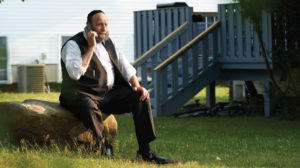Build a Learner


1. Learn How to Learn
“One of the best tools you can give someone is helping them discover and uncover how they learn,” says clinical psychologist Dr. Rona Novick, Dean of Azrieli Graduate School of Jewish Education and Administration at Yeshiva University. “They can then apply this to every learning opportunity in their lives.”
Dr. Novick uses key concepts from the field of study called metacognition — the science of learning how to learn — to help students achieve new heights.
A student once complained to Dr. Novick that she couldn’t remember what she read even after going through it ten times. The two of them explored many strategies to build her memory of learning: taking notes, listening to music, using mnemonics… nothing helped. Until she tried outlining what she’d read — finally she was able to retain the information. She was also equipped with a tool for life, helping her study well and accomplish her goals.
Remember, what works for you may not be best for your kid. Don’t force children to learn a certain way; rather, help your child discover what works for him or her. To help your child develop metacognitive awareness, shift the discussions from “How did you do on that test or homework?” to “How did you do the homework — what strategy worked for you?” When parents ask children to notice what is working for them, they engage the children in the process of learning how they learn.
“Try and fail, but don’t fail to try.” —John Quincy Adams
2. Safe and Secure
Regurgitating information may make the grade, but the best learning happens when information is internalized.
It’s only when children feel safe, secure, and cared for within a positive environment that they can really absorb information, according to Sarah Eidlitz, MA, Sp. Ed., founder and director of the Skill Building Center and Bnos Bracha in Monsey, New York. Reviewing material, songs, and hands-on learning are good tools, but it’s peace, trust, and care that lead to real results. Kids need to trust their teachers and feel safe asking questions and requesting clarification; if not, a child will be on guard and unable to fully integrate what he is learning.
As hard as you may try, you can’t control the atmosphere of your child’s classroom. Still, you can create a safe space at home, giving children the environment they need to succeed emotionally and academically. Open communication is critical.
Ask your child about his day, preferably as part of a cozy bedtime routine. Don’t overreact, warns Sarah Eidlitz. Many children have admitted to her that they won’t share what’s bothering them because they are afraid their parent will be too upset — either at them or the teacher.
Being available and present for your kids makes them less dependent on teachers and will protect them emotionally. Stronger kids who are loved bring out the best in everyone, including their teachers. Kids who get attention at home are more likely to ask for positive attention at school.
Keep your house peaceful and safe, and connect to your Creator by asking for His help in your holy work.
“The only thing we have to fear is fear itself.” —Franklin D. Roosevelt
(Excerpted from Family First, Issue 611)
Oops! We could not locate your form.













